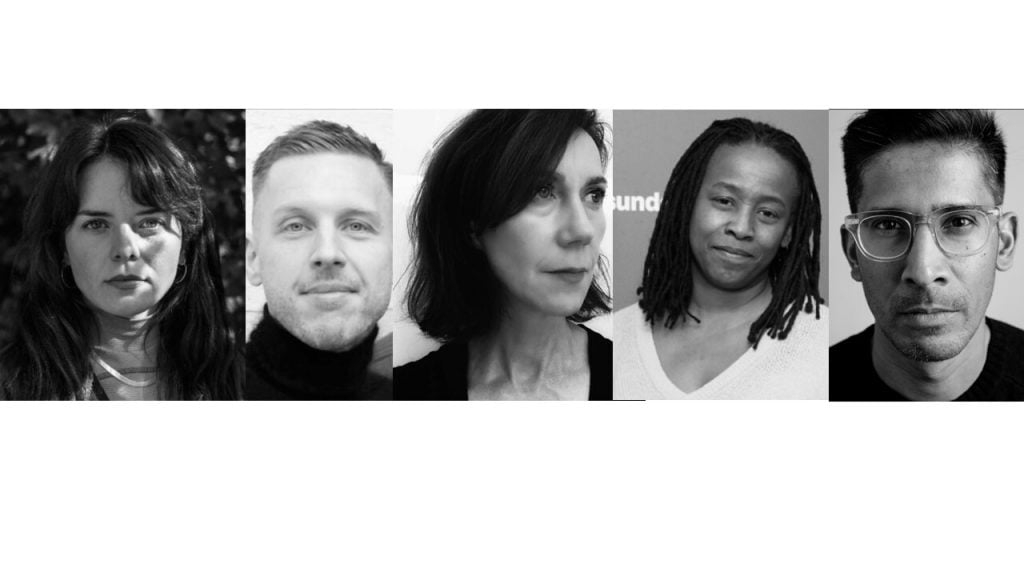
[ad_1]
Clearly, technological innovations are changing the way art is created and shared, enabling artists to reach new audiences beyond the conventional boundaries of the art world. To wit: Facebook Open Arts has partnered with the Helsinki Biennial, the world’s first art biennial with sustainability at its core, making its program available not only for people in Finland, but also for audiences online and around the world.
Artists of all kinds are increasingly leveraging the latest tech developments to express their most urgent ideas, often grappling with issues of sustainability, social justice, and technology itself. Recently, Artnet News’s Europe Editor Kate Brown moderated a panel exploring sustainability in art and technology. Participants explored the moral and ethical challenges faced by new-media artists—and asked what the limits of digital art’s ability to address urgent contemporary issues are as well.
Panelists:
- Samir Bhowmik, Helsinki-based multi-disciplinary artist and Helsinki Biennial participant
- Stephanie Dinkins, transmedia artist currently in residence with Facebook Open Arts & AI Team
- Josephine Kelliher, Experiences Lead, Facebook Open Arts
- Patrik Söderlund, founding member of artist duo IC-98 and Helsinki Biennial participant

From left: Kate Brown, Patrik Söderlund, Josephine Kelliher, Stephanie Dinkins, and Samir Bhowmik.
In this conversation, you’ll hear:
- Stephanie Dinkins on why it’s important for artists to engage with Artificial Intelligence: “I think art brings new perspectives. I’m a novice, a tinkerer—someone who plays in this space, not someone who knows this space. I have very different questions than the engineer. I think it’s really valuable for artists to be able to lead in this way of questioning from the outside in. We don’t have the luxury to not be involved. My own fear is that communities of color in particular are going to get left behind if we fear the system so much that we just step out of it. And the question is what can we do now to pave the way so that people can work in it deeply, understanding that they have a role to play in trying to help craft the future?”
- Samir Bhowmik on the role of empathy in art and technology: “We relate to technology as an apathetic and indifferent tool, but it’s pretty ingrained in our lives. It’s around us—it’s in the forest, it’s on the island. There’s nothing called nature as such anymore. You have to also consider that technology also comes from within us—it’s part of our universe, and we are part of it. So my approach to this is always to take it all in—not fight it, but to work with it, and to kind of carve it, and sculpt it, and shape it, and choreograph it in ways we can understand it and deal with it better. That’s all we can do now.”
- Patrik Söderlund on addressing the climate crisis in his work: “If I’m critiquing or talking or worried about the climate crisis, obviously I don’t want to be part in creating it or furthering it. But I’m battling with this all the time. At the moment, we’re working on this huge landscape park, which is being planned on the site of an abandoned iron mine in northern Finland. Most of our working group is in the south, so it turns out we have to constantly travel there. And then I have to ask myself, ‘Is it better to do something, or is it better not to do anything?’ It’s a difficult question. In our practice we have made this compromise that maybe 50 percent of our output is filmmaking or animation or something like that, and the other 50 percent is projects which are site-specific. So I hope we are at least able to maintain some kind of balance.
- Josephine Kelliher on Big Tech’s role in art and culture: “What artists are doing is so important to the world, and we saw this over the period of the pandemic—how thirsty we were for those things that fill the soul up, and how much we felt the absence of important conversations, encounters, and engagement. So I think the most important thing is that technology companies are recognizing their duty of care to the cultural industries, and showing up for them—to put themselves in a space of listening and learning from artists here and now. That’s the ambition we have at Facebook Open Arts—not to catch up after the fact or pretend that we’re ahead, but to be in a space of learning, and to walk with the artists as they explore, as they tinker, as they disrupt.”
Follow Artnet News on Facebook:
Want to stay ahead of the art world? Subscribe to our newsletter to get the breaking news, eye-opening interviews, and incisive critical takes that drive the conversation forward.
[ad_2]
Source link